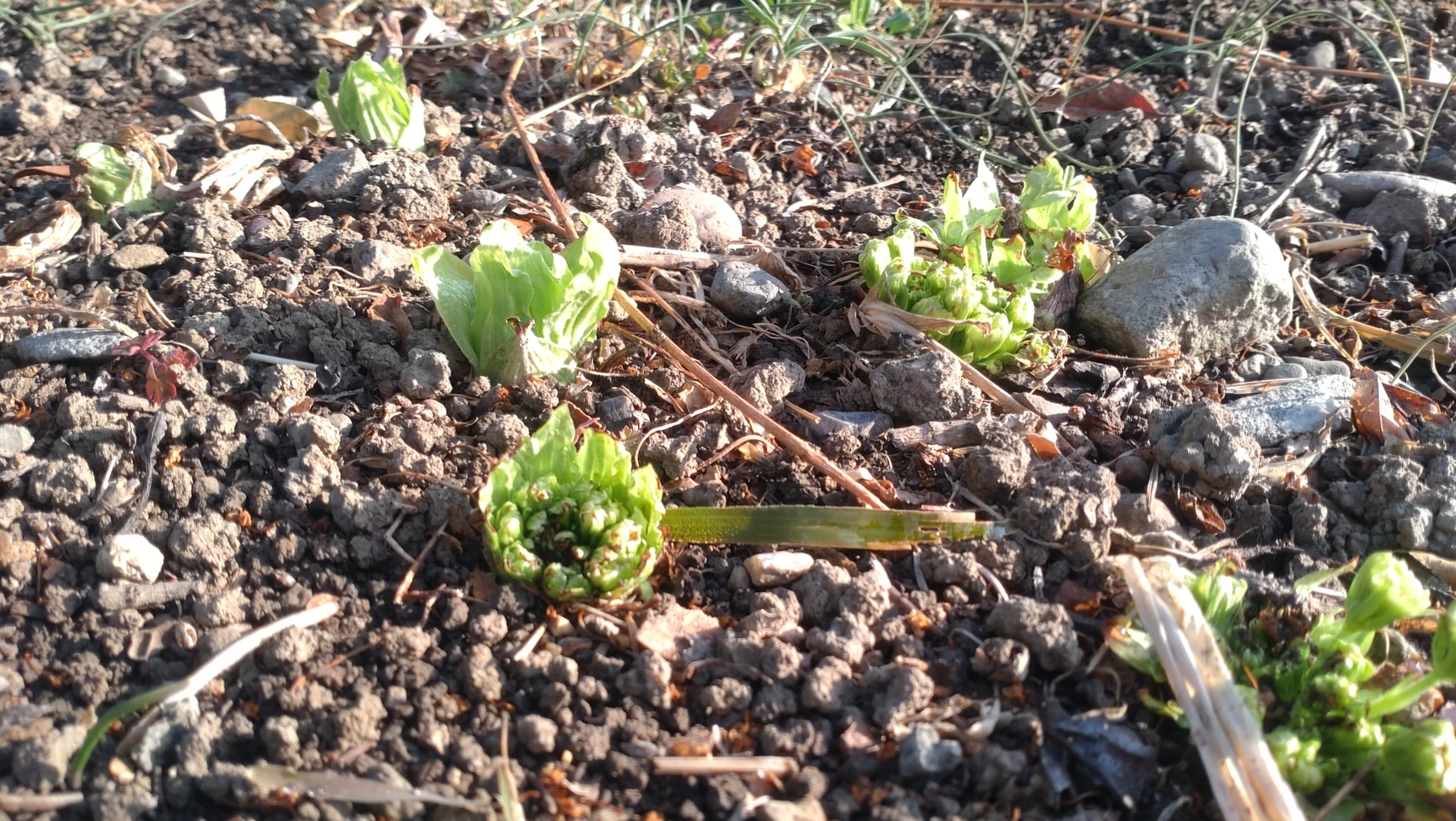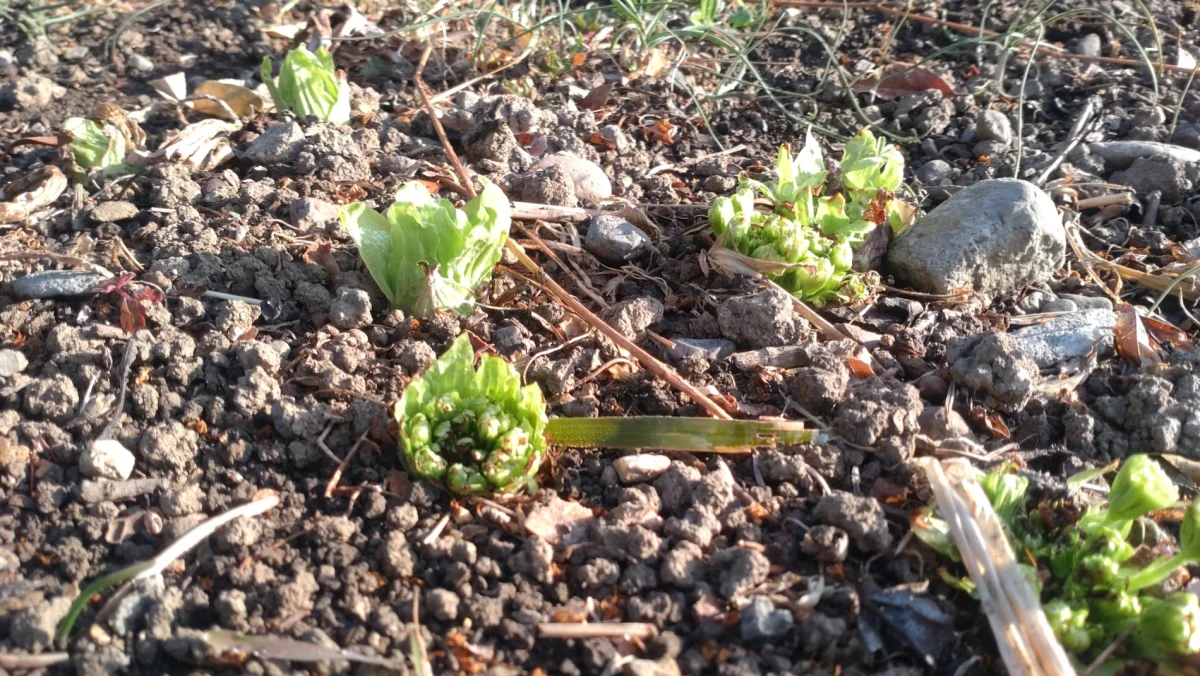
Butterbur shoots (Fukinoto) are delicious spring mountain vegetables with a pleasant bitterness, and are used in dishes such as tempura and Fuki miso. This year, butterbur shoots have sprouted in Grandma’s garden. It’s an annual treat that comes around the time when the mountain stream fishing season opens.
I had spotted them last week, but I forgot to harvest them and waited for the next harvest opportunity (Sunday). I was worried that the flowers might have bloomed, but it seems I caught them at just the right time. So, I brought some of these butterbur shoots home and made Fuki miso. Here’s how I did it.
Harvesting and Preparing Butterbur Shoots
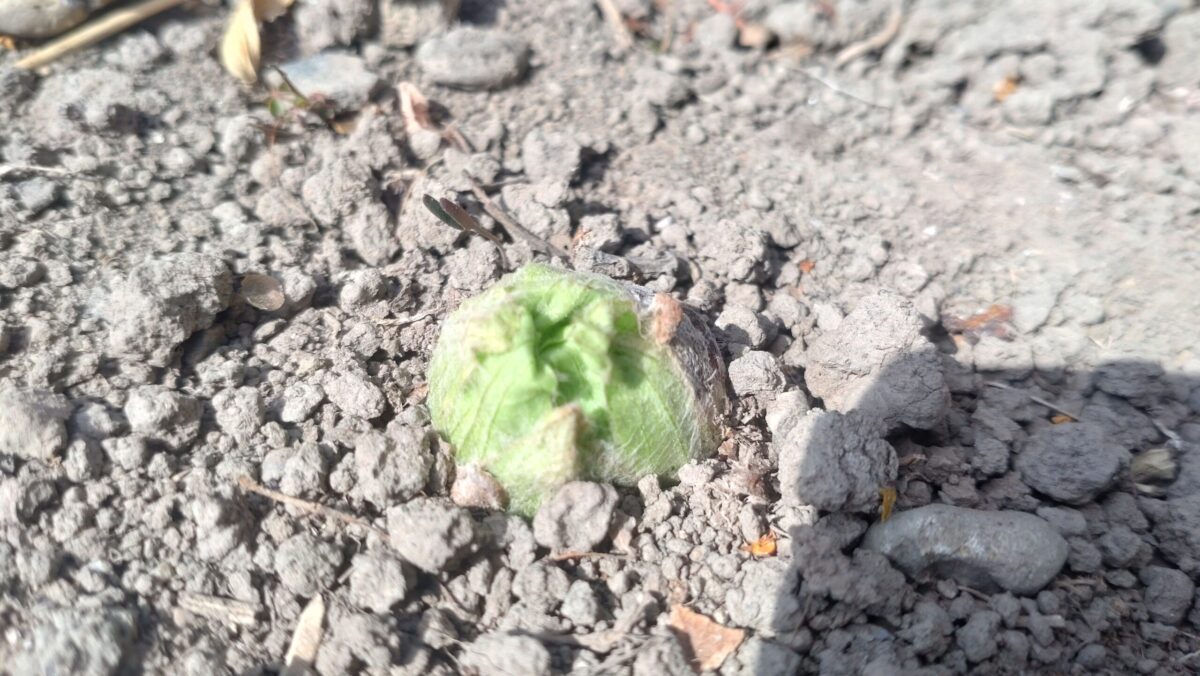
Harvesting butterbur shoots is all about timing. If you think, “Oh, they’ve come up,” the flowers bloom in no time, and you miss the window for eating them.
When harvesting butterbur shoots, I use a shovel. Ideally, you should use scissors to carefully snip them off, but I’m a bit of a rough-and-ready type, so I just use a shovel to dig them up, aiming for the base of the root and flower stem.
Besides, I’m the only one in my family who eats butterbur and butterbur shoots, so even if they disappeared from the garden, Dad would probably just think, “One less thing to take care of” and be happy about it (laughs).
Preparing the harvested butterbur shoots
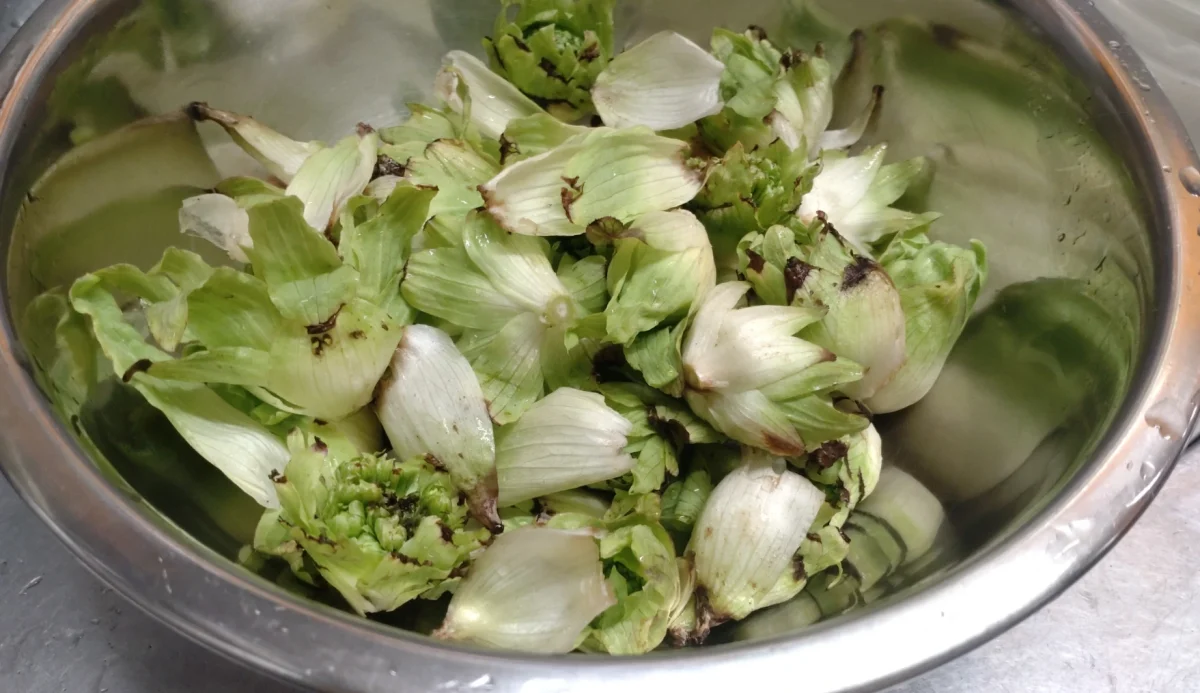
It’s recommended to parboil them before cooking, except when making tempura… but I just rinsed them in water (I figured it’s okay since I’m not eating a lot).
A while ago, the Ministry of Health, Labor and Welfare issued a warning that butterbur shoots contain harmful substances (such as pyrrolizidine alkaloids and fukitoxin), so you need to prepare them properly.
Apparently, eating too much can be bad for your health, but at the same time, there have been no reports of health problems in Japan, so I guess it’s okay as long as you don’t eat a huge amount (they say the roots are also bad for you! I’ve never eaten them, though).
Being the lazy person I am, I just cut off the roots, soaked them in water, and rinsed them under running water to remove any dirt or grime (※If you’re going to do this yourself, I recommend parboiling them).
Cooking Butterbur Shoots
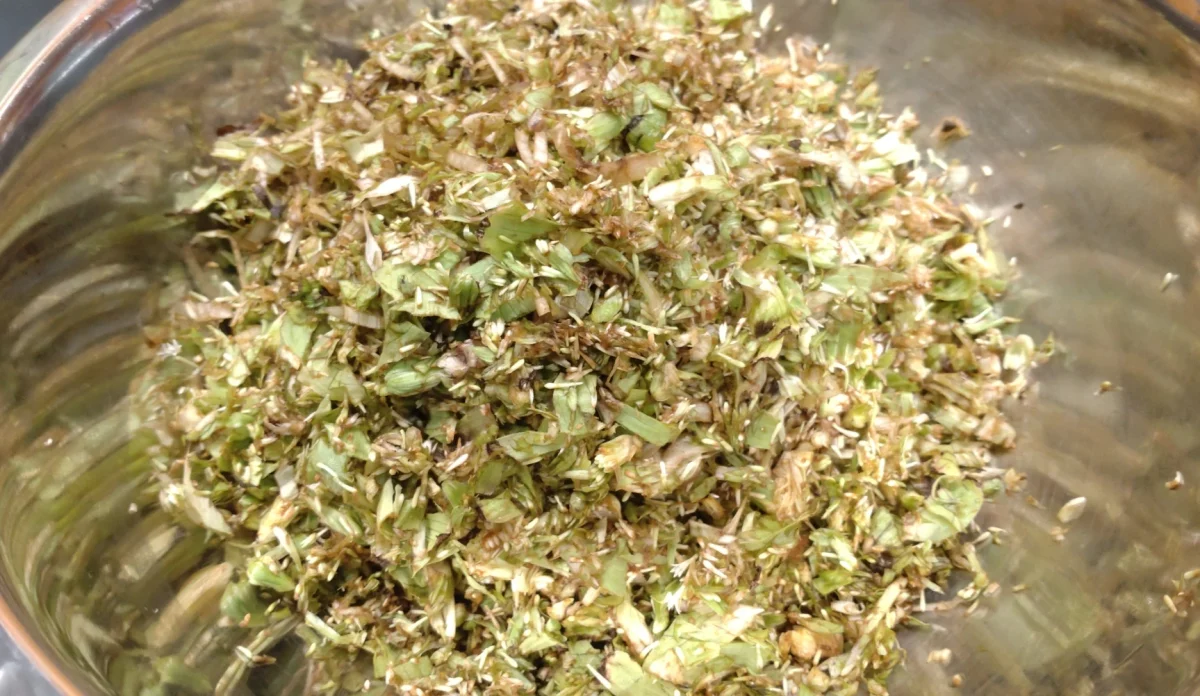
Once they’re prepared, chop them finely.
By the way, butterbur shoots discolor quickly where they’re cut or damaged, right? Even if you’ve just picked them, the cut surfaces and small scratches turn brown in no time, and they stain the cutting board, which is a pain to clean later.
The cooking itself is super easy.
Heat some oil in a frying pan, add the chopped butterbur shoots, and stir-fry them. Once they’re cooked, add mirin, miso, and sugar, and cook until the liquid evaporates. That’s it.
In my case, I think I used a ratio of about 4:1:2 for miso, mirin, and sugar, but basically, I just taste and adjust as I go. It’s a pretty slapdash way of cooking.
However, butterbur shoots go well with oil and soak up quite a bit, so I use about three times as much oil as I would for a regular stir-fry.
Store the finished Fuki miso in jars or Tupperware in the refrigerator. It’s an essential side dish for rice at this time of year!
The end.
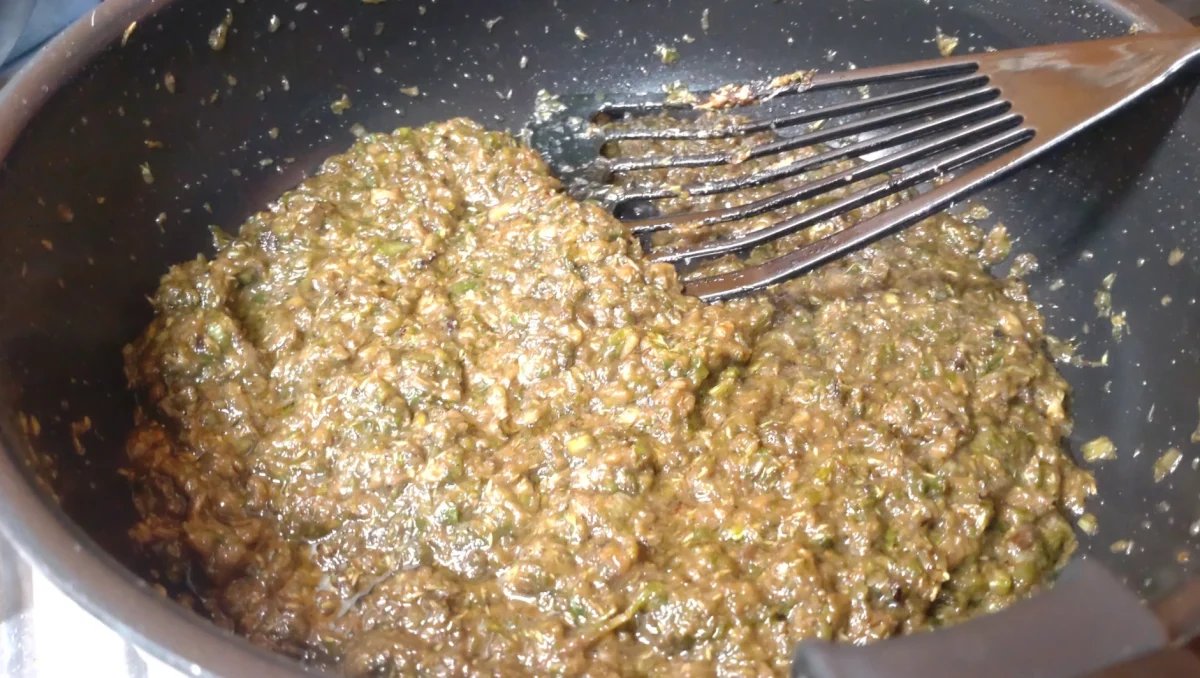
Additional information:
- Butterbur shoots (Fukinoto): These are the flower buds of the butterbur plant, a perennial herb native to Japan. They have a distinctively bitter flavor and are considered a harbinger of spring.
- Mountain vegetables (Sansai): This is a general term for edible wild plants that grow in the mountains of Japan. They are an important part of Japanese cuisine and are often gathered in the spring.
- Fuki miso: This is a traditional Japanese condiment made from butterbur shoots, miso, sugar, and mirin. It has a sweet and savory flavor with a hint of bitterness.
- Mirin: This is a sweet Japanese rice wine used for cooking. It adds sweetness and flavor to dishes.

